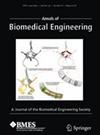A Virtual Response Surface Strategy to Predict the Effects of Contouring on the Static and Fatigue Mechanical Behavior of Spinal Rods
Abstract
Spinal fixation techniques based on contoured spinal rods are well established to restore an adequate sagittal alignment; however, they often break due to fatigue loading because residual stresses arise while deforming the material and they significantly reduce rod fatigue strength. The present paper aims at developing a novel strategy based on Response Surfaces (RS) as surrogate reduced order models to accurately predict the key biomechanical parameters involved both during static spinal rod contouring and subsequent fatigue loading. Finite element (FE) models of different contouring methods are performed on a wide range of spinal rods to reproduce typical clinical scenarios. RSs based on polynomial equations are initially used to fit the collected FE data and relate input parameters of the process to outputs mechanical variables. Then, the RS approach is assessed and validated by comparison with extensive experimental observations from a variety of fatigue tests. The RS provides an accurate prediction of the output parameters of interest (R2 = 0.88-1), with an average relative error up to 9% compared to computationally demanding FE models. Fatigue outputs are correctly predicted both for breakages and survivals of rods, despite an average overestimation on the equivalent stress of 11%. The RS approach proves credible and accurate in predicting the experimental fatigue strength of contoured spinal rods. The proposed method could serve in clinical practice as an intraoperative virtual tool to support the decision-making process.

 求助内容:
求助内容: 应助结果提醒方式:
应助结果提醒方式:


